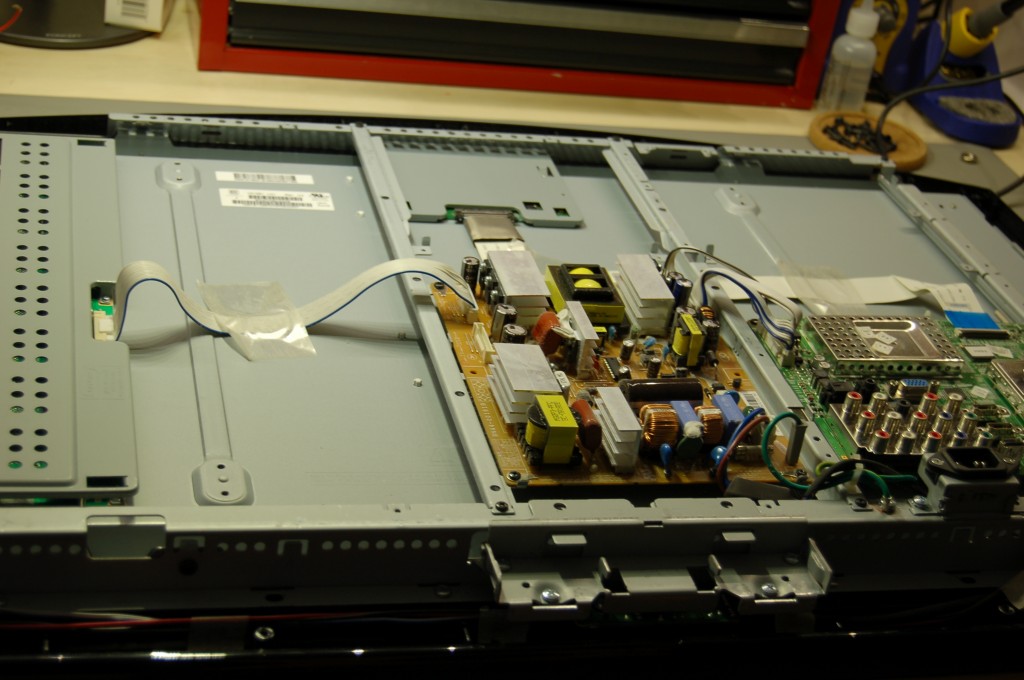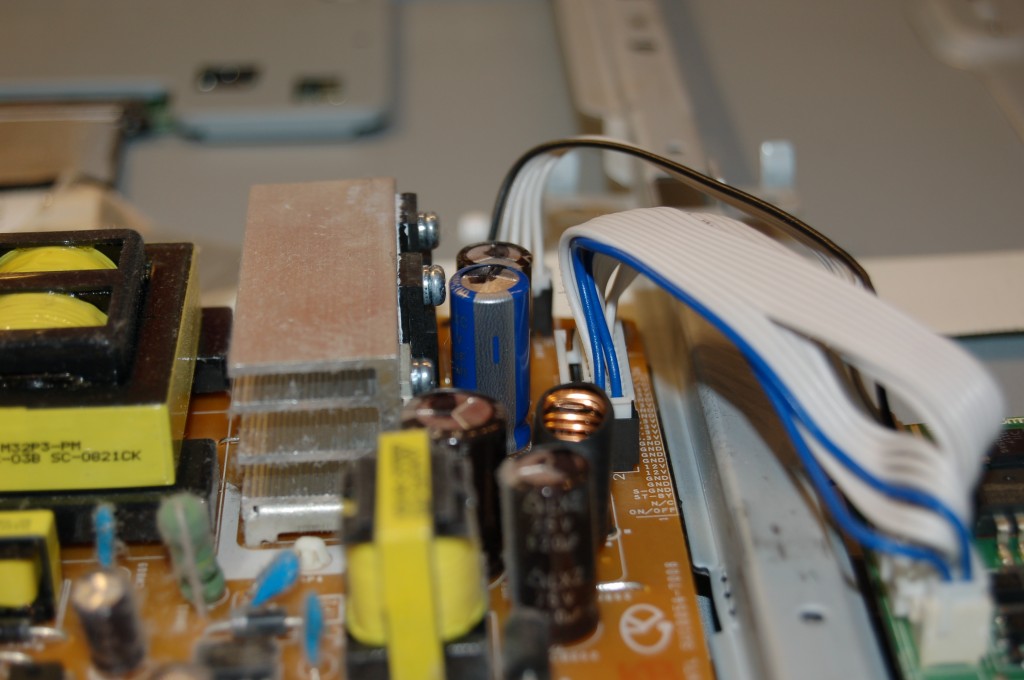You’d think after almost a decade of blown caps on motherboards, that the OEMs would finally take care of that? Yeah, sure. I got my hands on a Samsung LN32A330 TV, made in June 2008. Pretty much a brand new thing as far as TVs go. Main complaint- it stopped turning on. So I plug it into my trusty Kill-A-Watt meter and try to power up. I see that it’s trying to draw some current, but then shuts down. Sounds like a power issue to me -time to take it apart. Lots of screws later, we have it open:
There is not much there- a power supply and a tuner/image processing boards. So naturally we take a look at the power supply. And what do we see there? Bulging caps
A few minutes with a soldering iron and a cap from my junk bin that was an actual brand name low ESR variety and we are back in business. The exploded cap was a no-name cheapie, rated to 85C and stuck right near a heatsink. Go figure


Its called “pre-planned obsolescence” How else are TV manufacturers going to sell new TVs if the old ones don’t break down requiring expensive repairs if not done by DIYers ?
Even if a different brand is purchased due to dissatisfaction because of the failed one, a rising tide raises all boats – meaning every manufacturer benifits so they all use cheap caps.
I had a Magnavox, my first LCD TV that after 4 years (warranty was 3 years) just stopped working one day. Upon opening it I found two bulging caps in the power supply. Looking up the specs revealed these to be 1800 hour caps. I replaced them with new Nichicon caps rated at 3600 hours, the highest life span I could find on Digikey and cost only $3. more at retail prices which a mfg doesn’t pay that much, . I went and replaced 4 additional caps for good measure for a total of $12.00 w/ shipping. The TV lasted 4 more years and was still working when I upgraded 4 years later.